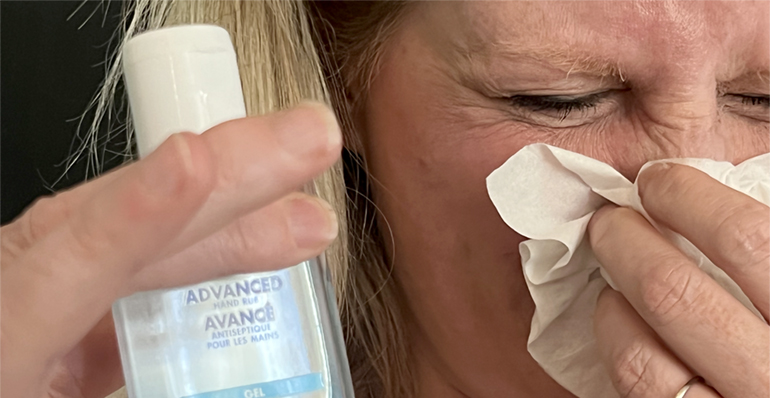Colds, flu and COVID, oh my!

Fall is synonymous with cold and flu season, and with COVID-19 symptoms directly comparing with influenza symptoms, it’s understandable that both teachers and students may feel a little uneasy about heading back to normal and back to school this September.
Dr. Wael Haddara, Chief of Critical Care at London Health Science Centre (LHSC), commented on some factors we should keep in mind about the upcoming months ahead.
“We had two years of masking, so there is little by the way of respiratory seasonable viruses,” said Haddara. “And so whatever immunity people may have had in the past is gone completely.”
Haddara added that there is a risk we could see a “double whammy” this coming fall and winter, of regular respiratory diseases, as well as COVID-19. So let’s go over some of the similarities between something like the flu and COVID-19.
Influenza and COVID-19 symptoms:- Sore throat
- Runny nose
- Sneezing
- New or worsening cough
- Shortness of breath or difficulty breathing
- Temperature equal to or more than 38°C
- Feeling feverish
- Chills
- Fatigue or weakness
- Muscle or body aches
- New loss of smell or taste
- Headache
- Abdominal pain, diarrhea and vomiting
Perhaps it’s a good idea to remind ourselves that prevention is better than cure, and that knowledge is one of our greatest tools in tackling the challenges we are bound to face when returning to normal life after the pandemic. Haddara seemed cautiously optimistic.
“We have vaccines and may very well have Omicron specific vaccines by the fall. Omicron is associated with more infections, but also associated with less severity,” Haddara said. “Where we’re not in a better place is that we continue to see variants [of COVID] evolving, and there are no guarantees that they will be mild variants, or less severe variants, so that’s a concern.”
Haddara added the reminder that the one thing COVID us has taught us is that we should prepare for the unexpected.
“COVID has always surprised us, so it’s important that we have ample agility built into these plans and be prepared to respond to evolving changes whether they are for the better or for worse.”
“It’s not all or nothing. Doing something, whatever it is, is better than nothing.”
How can we prepare ourselves for the upcoming season of colds, flu and COVID? Haddara suggested understanding your own risks as a good place to start.
“Students have some innate risks, and they have risks they have some control over. The average number of contacts for a student is three or four times the number of contacts for a typical adult. As the weather gets colder, students will push indoors unrelentingly; so not just classrooms, hallways, cafeterias, gyms…. Some of these risks are unavoidable.”
Taking both an offensive and defensive approach to remaining virus free is best. If this is a battle, then we must take up the challenge and become warriors.
To help you handle this fall’s cold, flu and COVID season, we’ve compiled a list of things you can do to keep us all healthy, safe and savvy.
Health tips:- Wear a mask
- Wash hands regularly
- Social distance where possible: crowded buses, cafeterias, study areas
- Stay hydrated
- Eat healthy and regularly
- Stay home when you feel ill
If guidelines change and you are unsure of what protocols are in place, check with your local public health authority for advice, including where and how to get tested if advised.
According to Haddara, practicing healthy habits is important but he also emphasized one very important point.
“It’s not all or nothing. Doing something, whatever it is, is better than nothing.”
The good news is we are, as a community, moving forward and facing the unknown together. We must continue to take our personal hygiene and preventative actions seriously, not just for ourselves, but for everyone around us.

